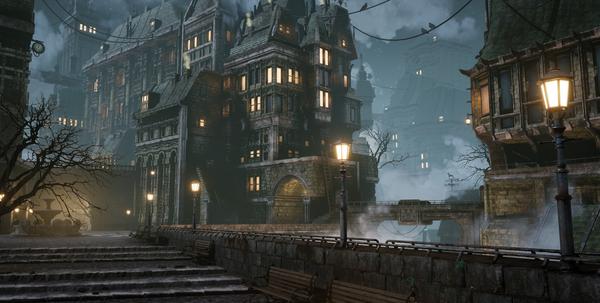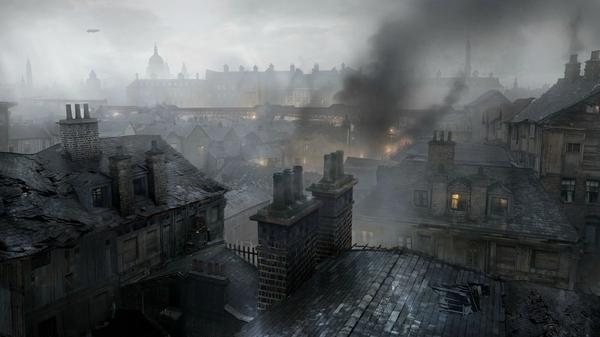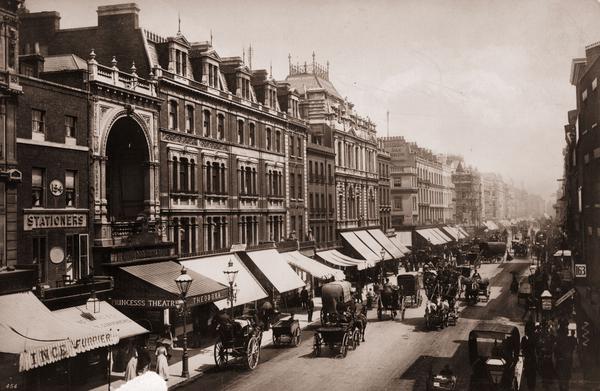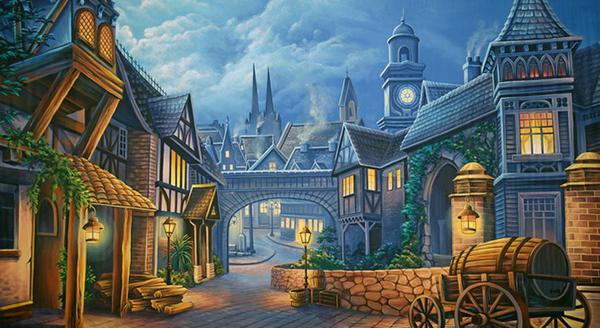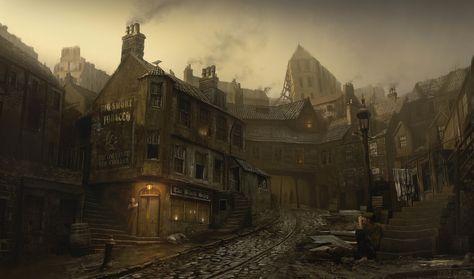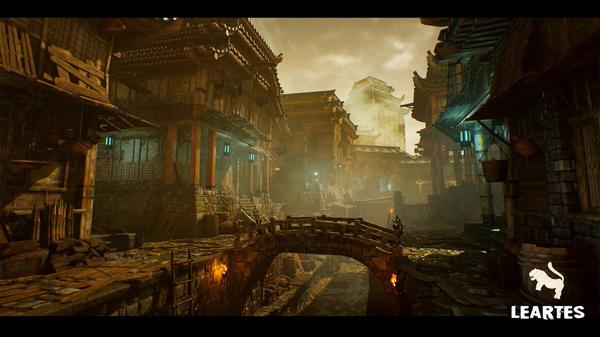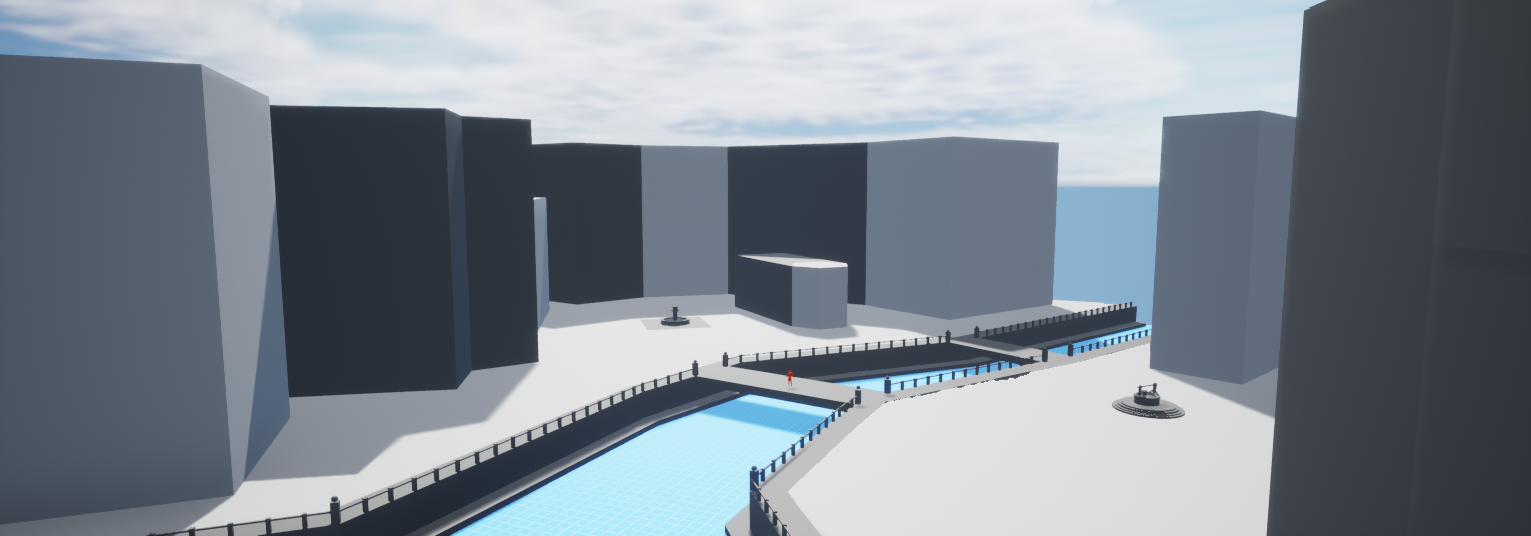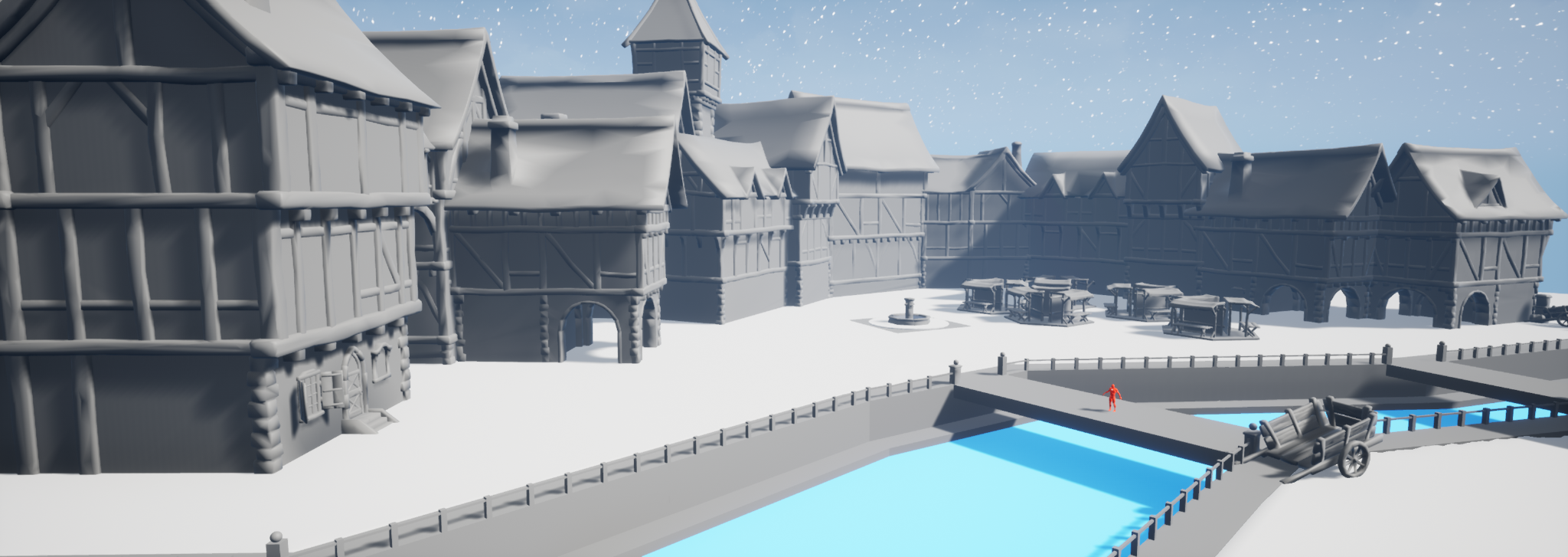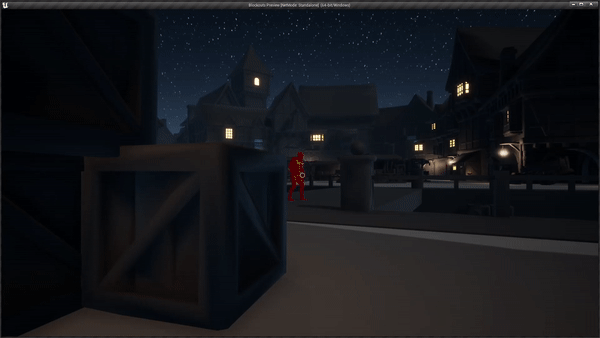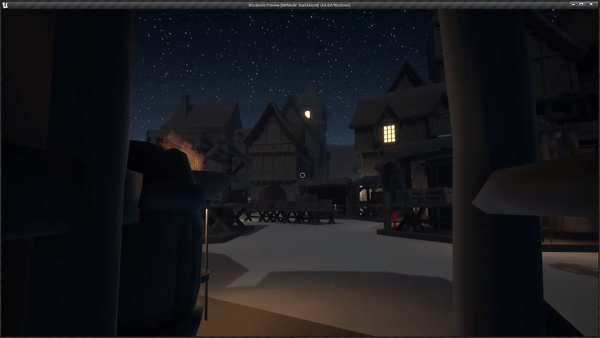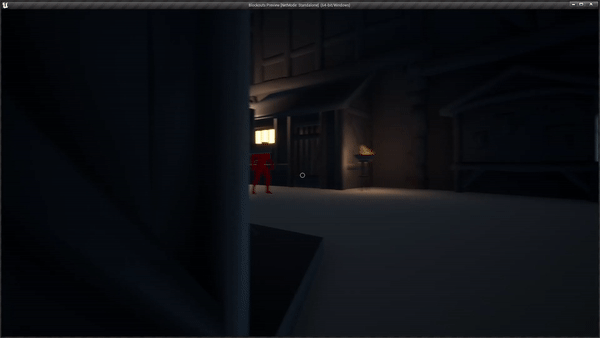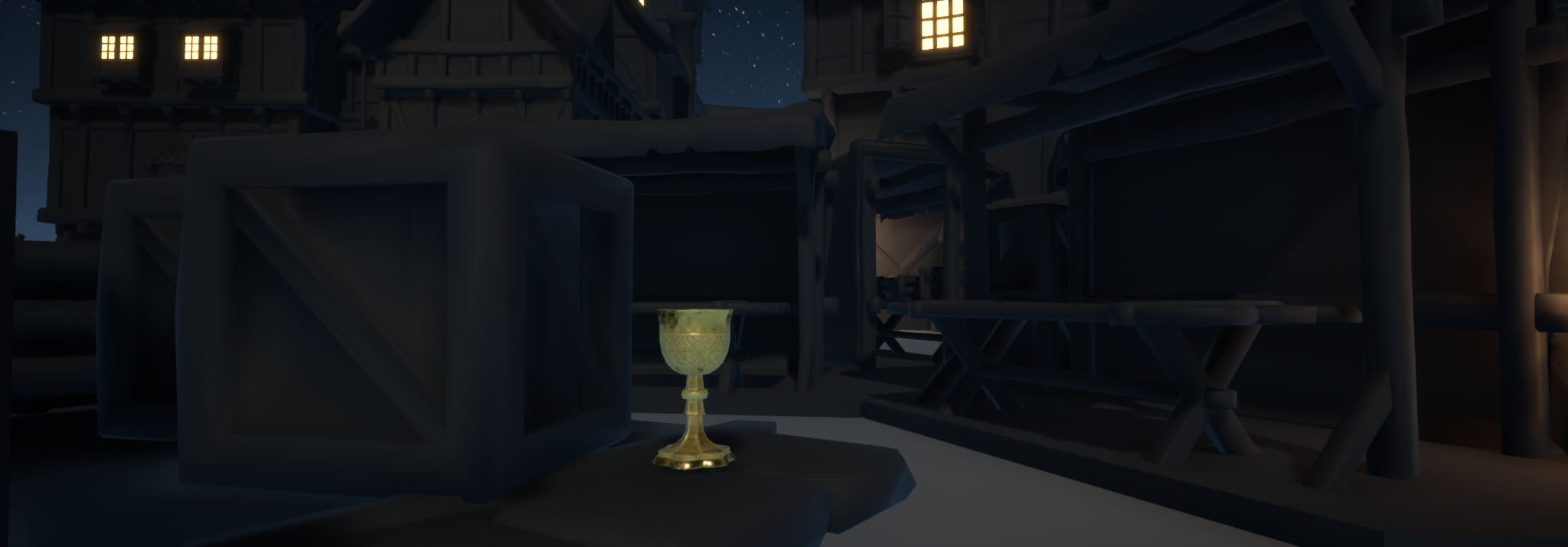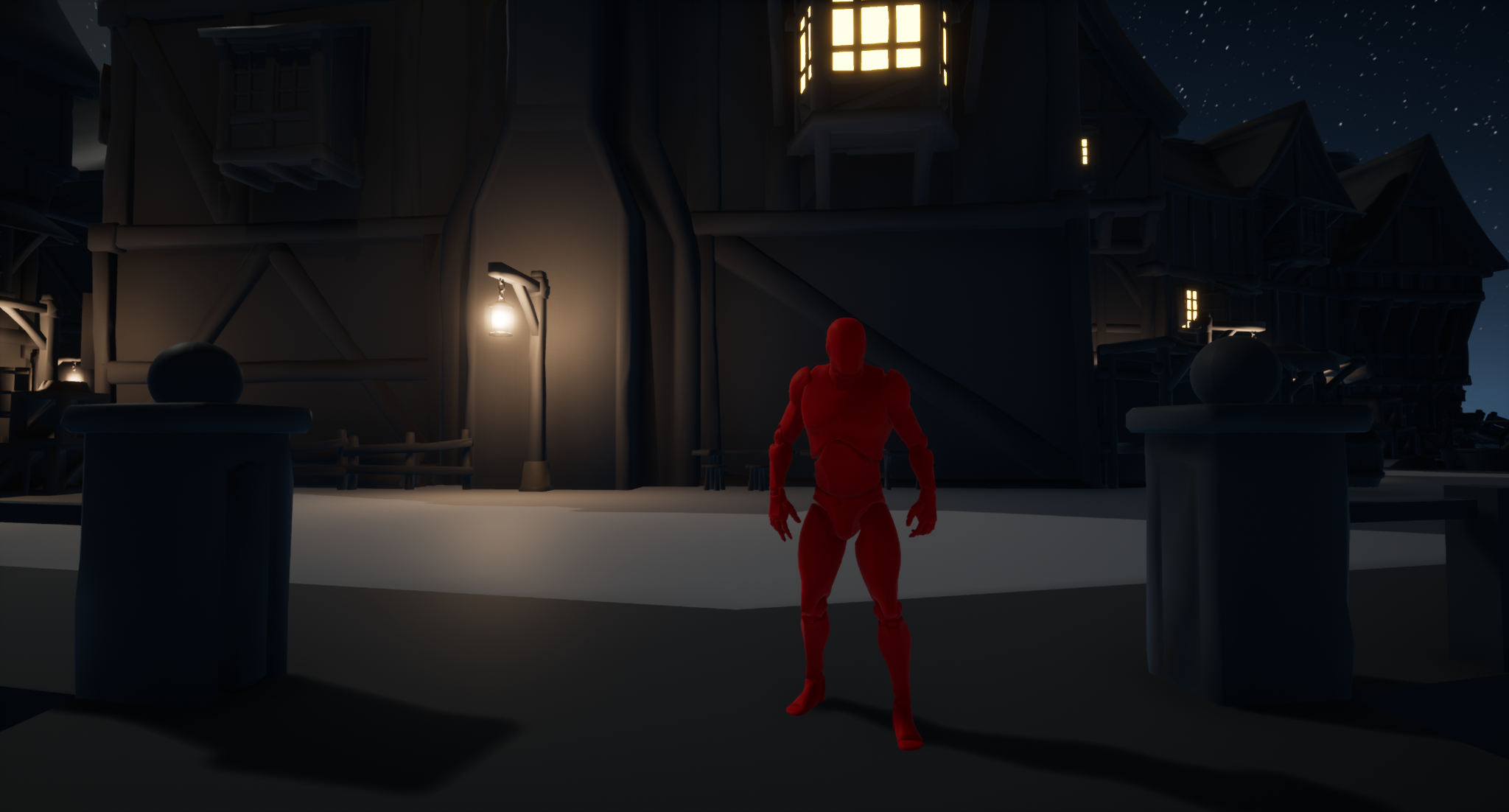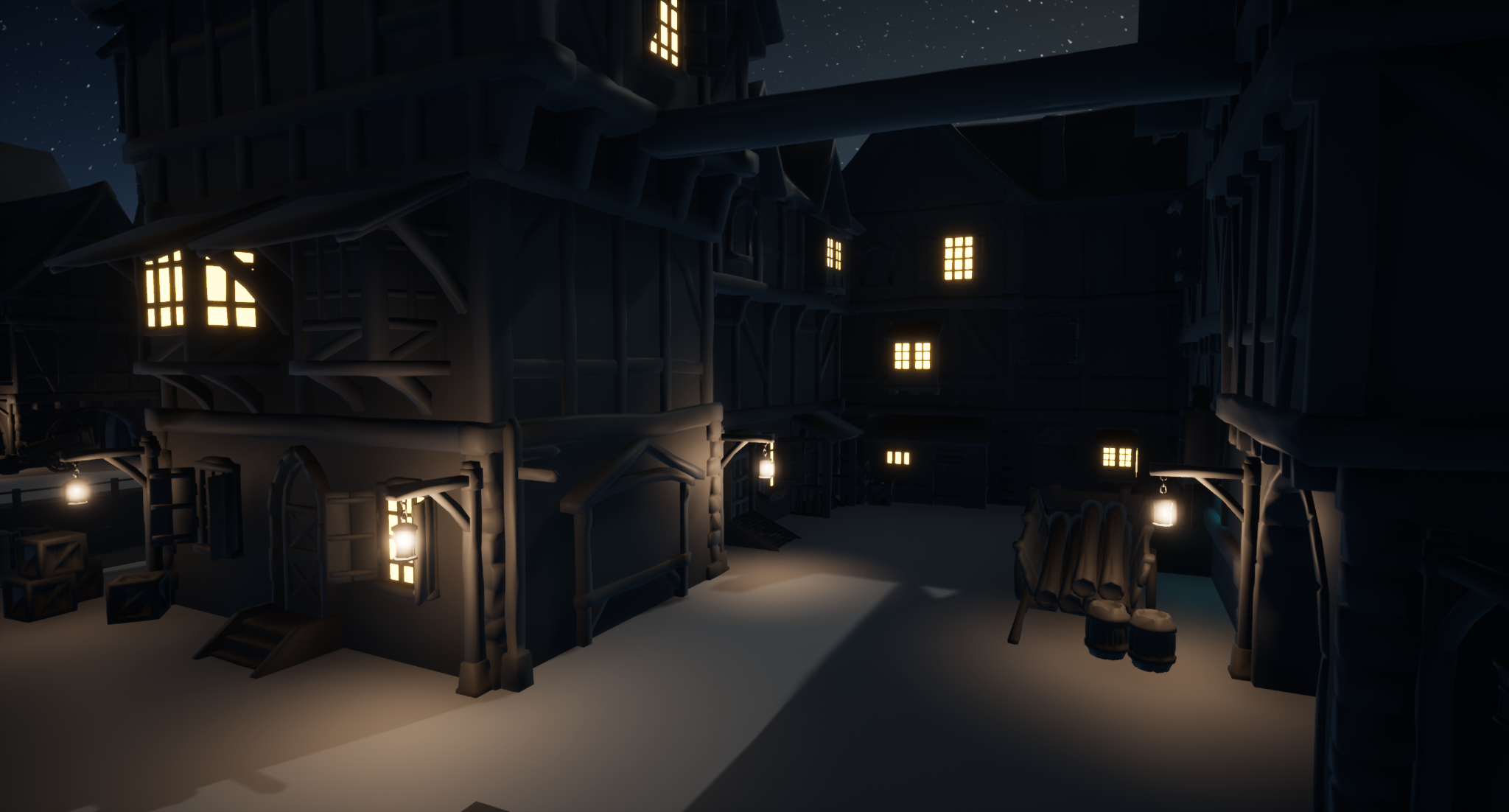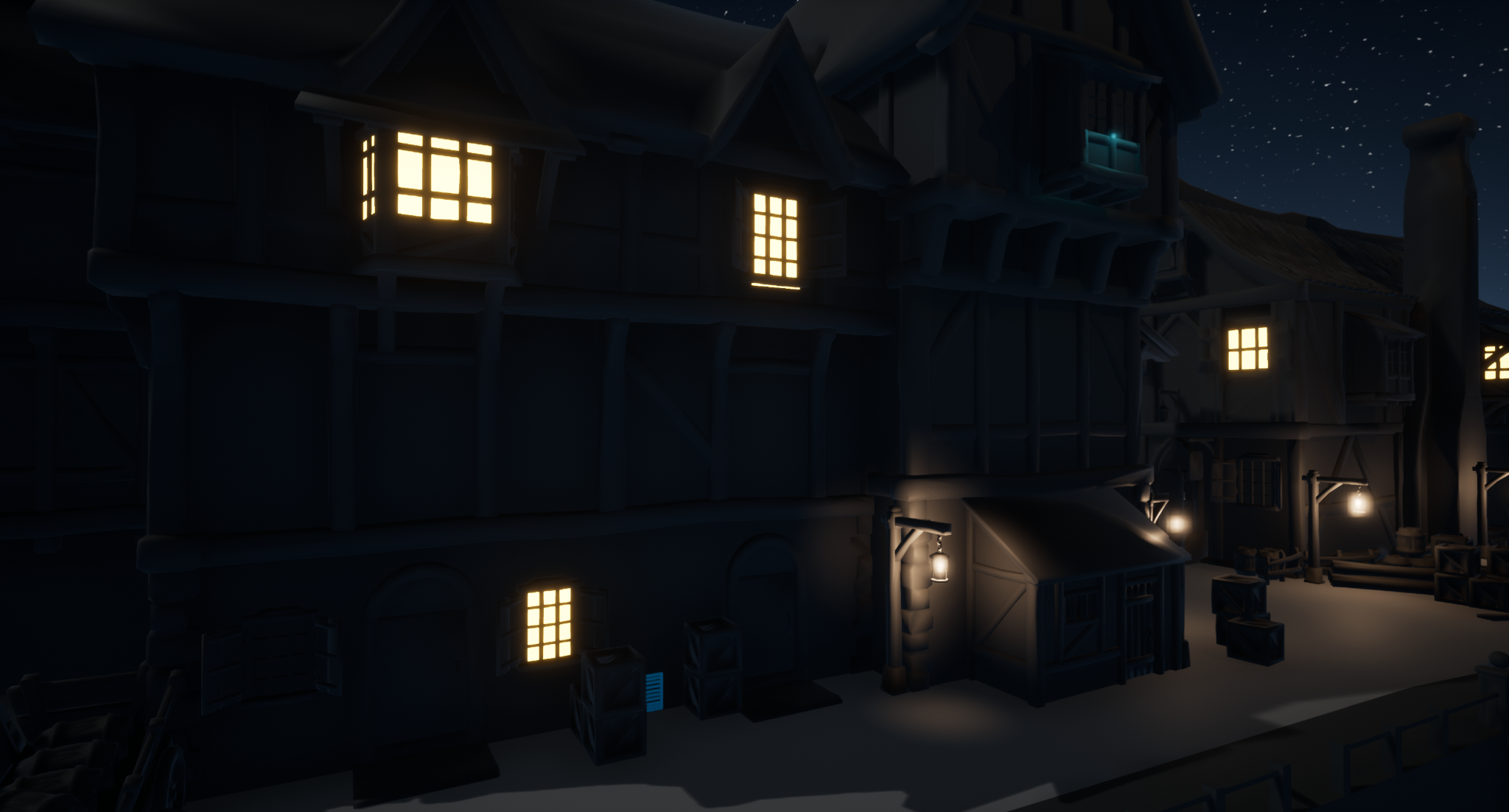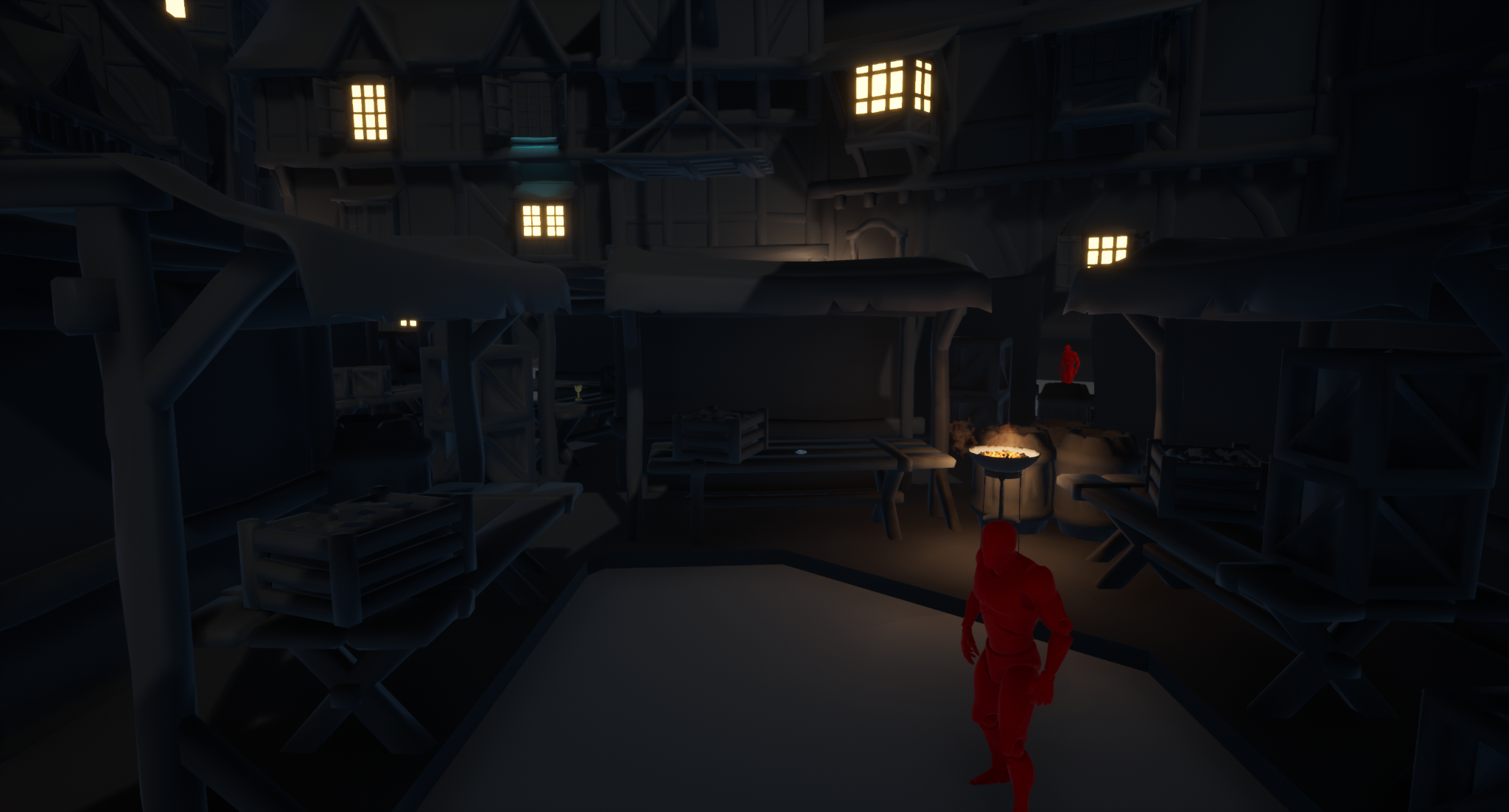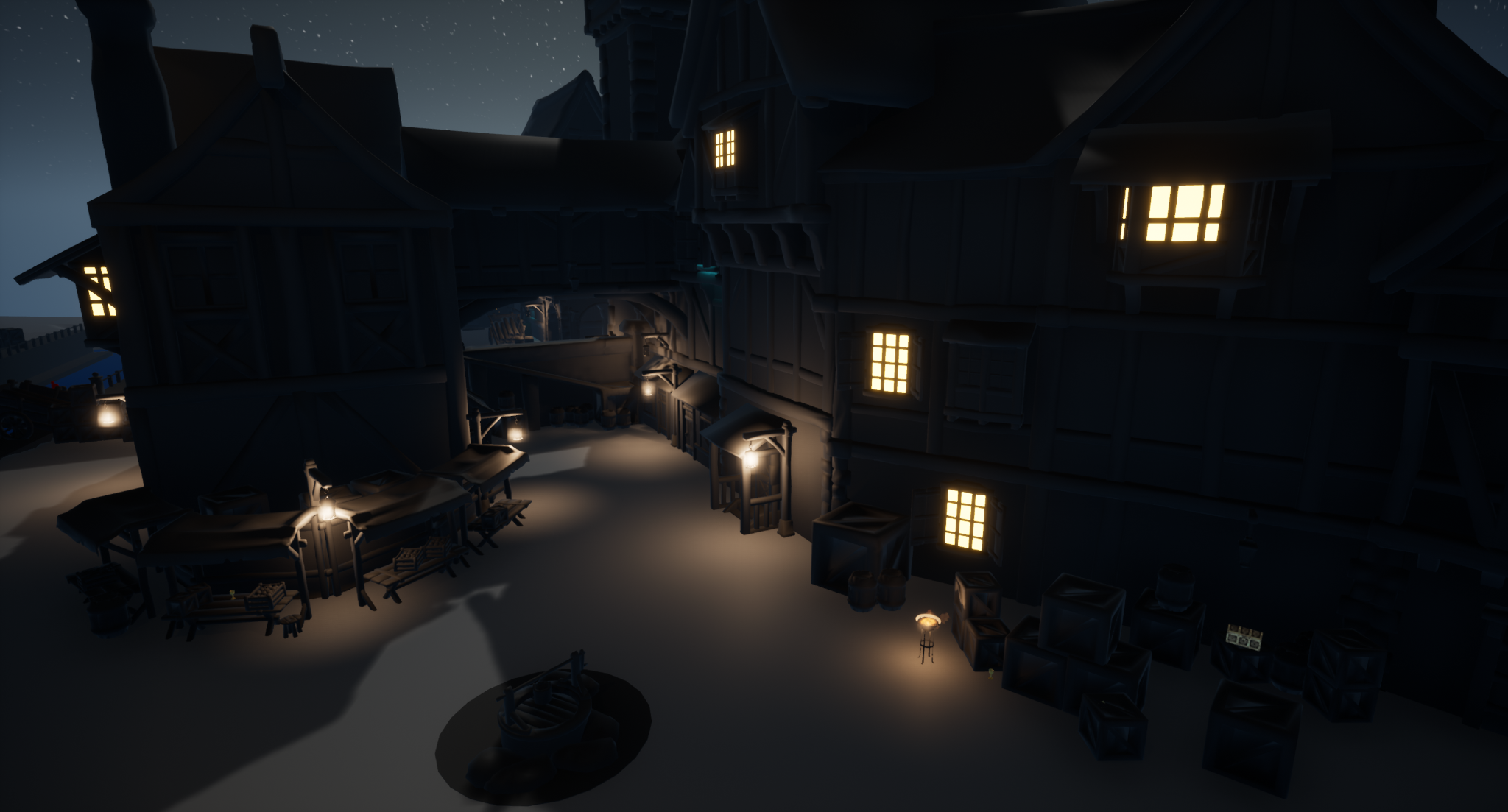Thief: Master of Shadows
PROJECT DETAILS
Engine: Unreal Engine 4
Genre: Stealth
Development Time: 2 Months
Role: Concept, Blockout, Lighting, Pacing, Scripting, Prop Placement
Assets Used: Modular Medieval Town & Medieval Buildings by Sugarworks, Super grid by ZeOrb
Overview
Purpose: Create a mock-level design / Blockout for an established IP while staying true to its aesthetic and "feeling".
Narrative/Setting: For this level, Garrett is hired to retrieve a chest that contains an unknown Item before it is shipped out. However, getting to the loading bay may be more of a challenge due to the increase in security. The City seems to be in the middle of hosting a festival and Garrett will need to move quickly to get to the loading bay before it's too late, and maybe "grab" a few souvenirs along the way.
My goals with this project were to:
1. Learn more about stealth Level Design
2. Practicing, refining, and solidifying my level design pipeline
3. Design a part of The City that would fit naturally within the Thief universe
Level Layout & Objective
Here is the level layout and the points of interest
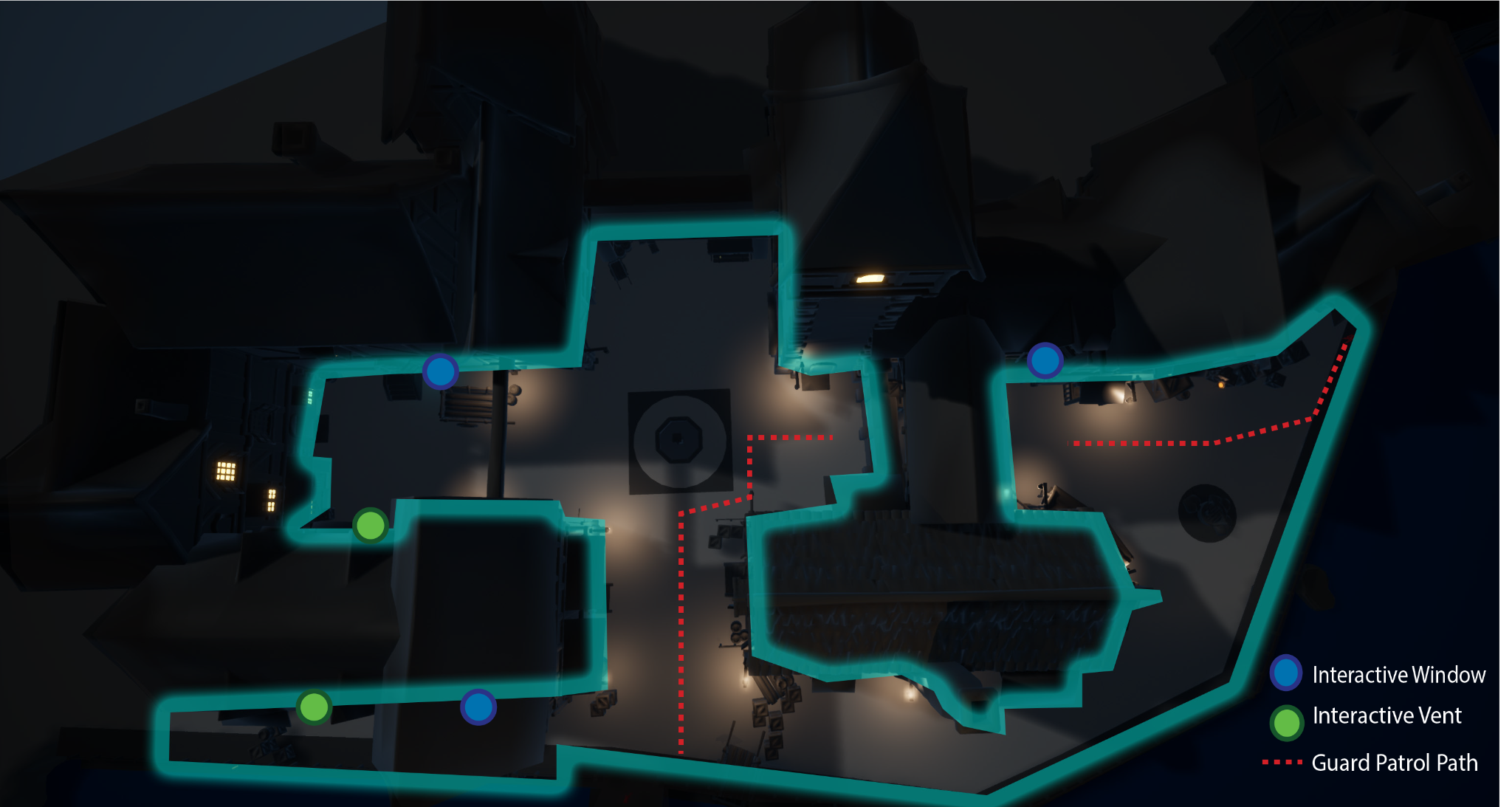
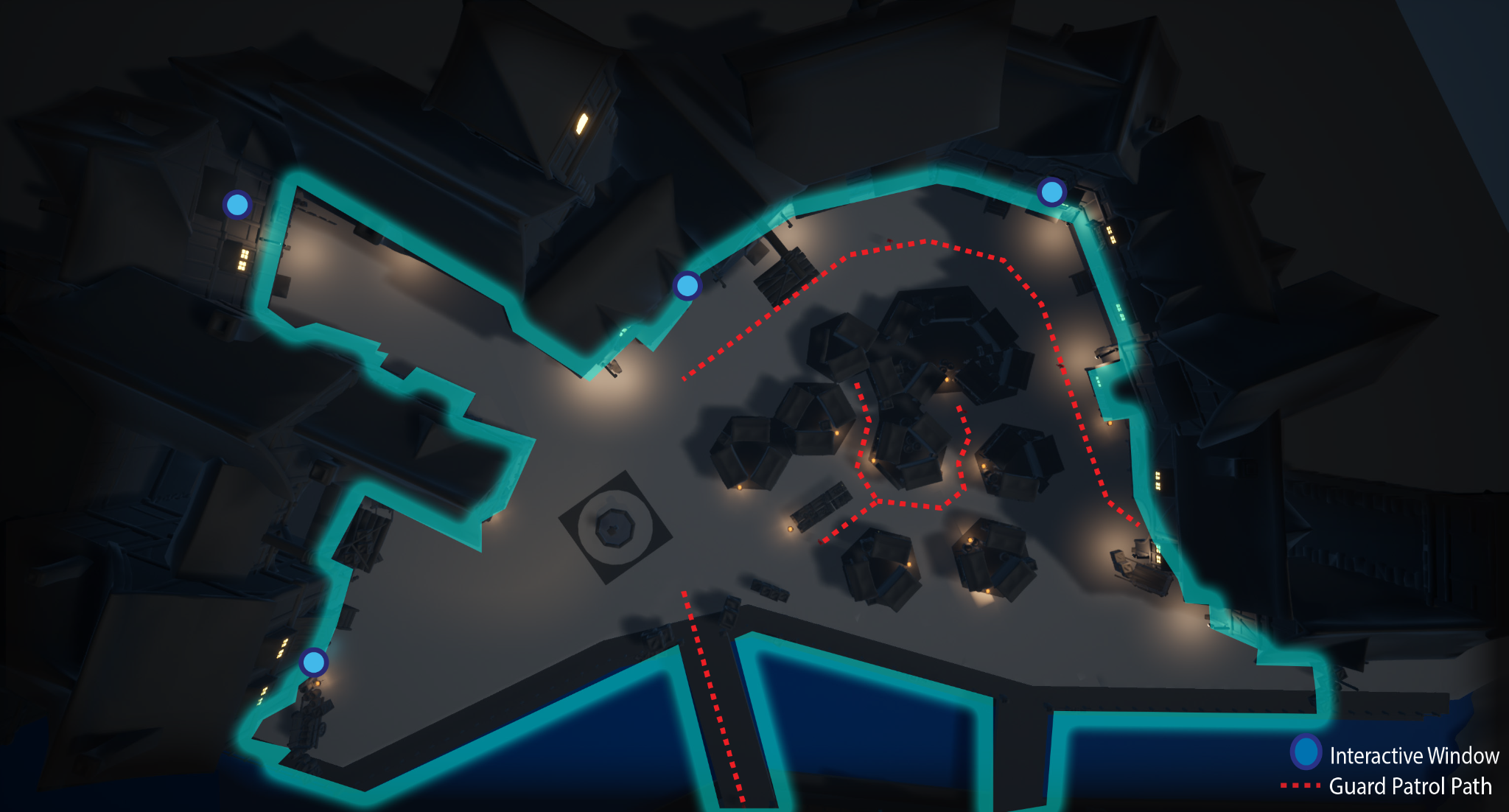
The mission objectives of this level are:
Steal a treasure chest from the loading bay
In order to complete this objective players will need to avoid being caught by guards as this will result in a failure
Design Process
Step 1: Research
For this project, I had a few different ways to gather research. However, I knew the best way would be to replay Thief.
While playing I tried to focus on:
- Building structures/placement
- Essential mechanics
- Reoccuring troupes
- Cover placement
- Core gameplay loops
- Level layout/prop placement
I also tried to find answers to my questions
- What geo elements are found throughout the entire city
- What common element exists between missions
- How is cover placed
- How are guards placed
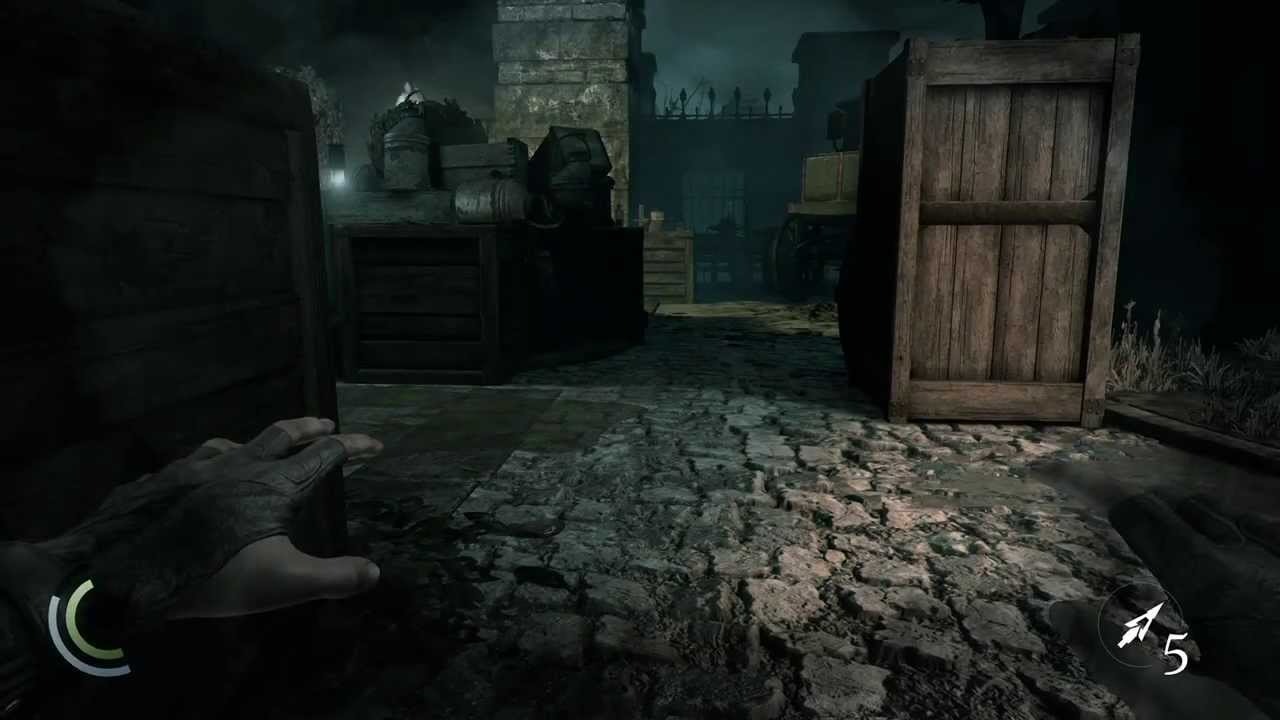
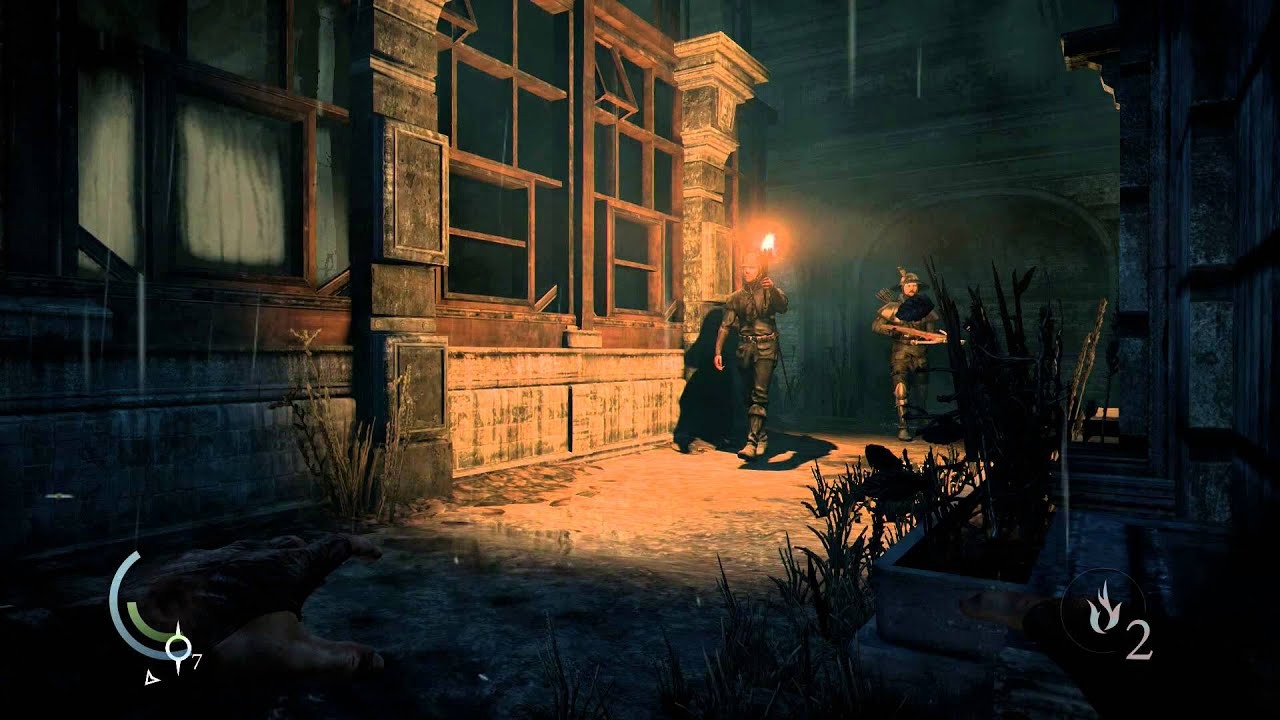
Step 2: References
To gather reference photos for my Thief project, I used a combination of online resources and in-game assets.
Online, I searched for images of medieval and Victorian-era cities, as these were the main inspirations for the game's aesthetic. I looked at a variety of images, including architectural photos, street scenes, and interior shots of buildings, to get a sense of the overall look and feel of these cities.
In addition to online resources, I also used in-game assets from the Thief series to gather reference images. I played through the game and took screenshots of various locations and objects, such as buildings, streets, and objects, to use as a reference in my level design.
Step 3: 2D Layout
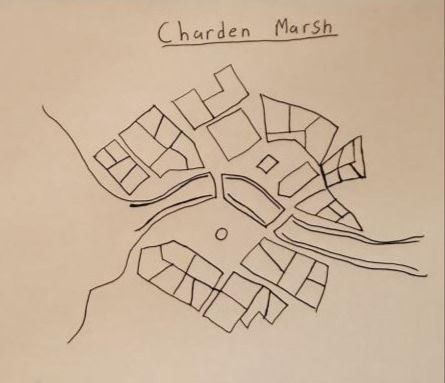
In order to develop my 2D map, I began by finding actual maps from the Victorian period and compared those maps to layouts that can be found in-game. For the most part, they matched up fairly well. So with this confirmation, I then used pencil and paper to sketch out various ideas for the level layout. This allowed me to quickly experiment with different ideas and narrow down the best options.
Once I had a few solid sketches, I used 2D design software to create detailed conceptualizations of the level layout. This allowed me to visualize the layout in greater detail and make any necessary adjustments. I then drew the final map on paper so that I could have a physical copy in case I needed to iterate more. For the most part, the overall layout stayed the same.
However, after a few playtests and some feedback I realized I had a lot of open space that wasn't being utilized as much as it should be. I decided to lean into the notion that victorian era cities are extremely cramped, from there I was able to place another building on the lower portion of the map which allowed me to even form another alleyway that can be utilized as a quick exit after completing the objective.
Step 4: Blockout
To create the block out for my Thief project, I started by building the river and canal, as these were the central features of the level. I used reference images and knowledge of real-world cities to guide the placement of the river and canal within the level. Once I was satisfied with the river and canal, I moved on to placing the buildings. I encountered some challenges with the spacing and size of the buildings, but I was able to overcome these by using in-game references to guide my design decisions. After several iterations, I was able to create a layout that felt natural and consistent with the game's aesthetic. Finally, I focused on the flow of the level, ensuring that the layout allowed for smooth and engaging gameplay.
Step 5: Polish
In the final stages of my Thief project, I focused on bringing the level to life and creating a cohesive gameplay experience. I started by defining a clear objective for the level, which helped guide my design decisions. The objective I settled on was for the player to acquire a treasure chest from the loading bay before it could be shipped off.
Next, I playtested and iterated on the level design, paying close attention to the overall aesthetic and the feeling of Thief. I created the market area, which included market stalls placed back to back to allow for pathways and trails that the player could use to move around the level and find loot.
Throughout this process, I kept the river and its role as an environmental hazard in mind, ensuring that it was integrated into the level in a way that added to the gameplay experience. By combining careful design, iteration, and playtesting, I was able to create a polished and engaging level that captured the spirit of Thief.
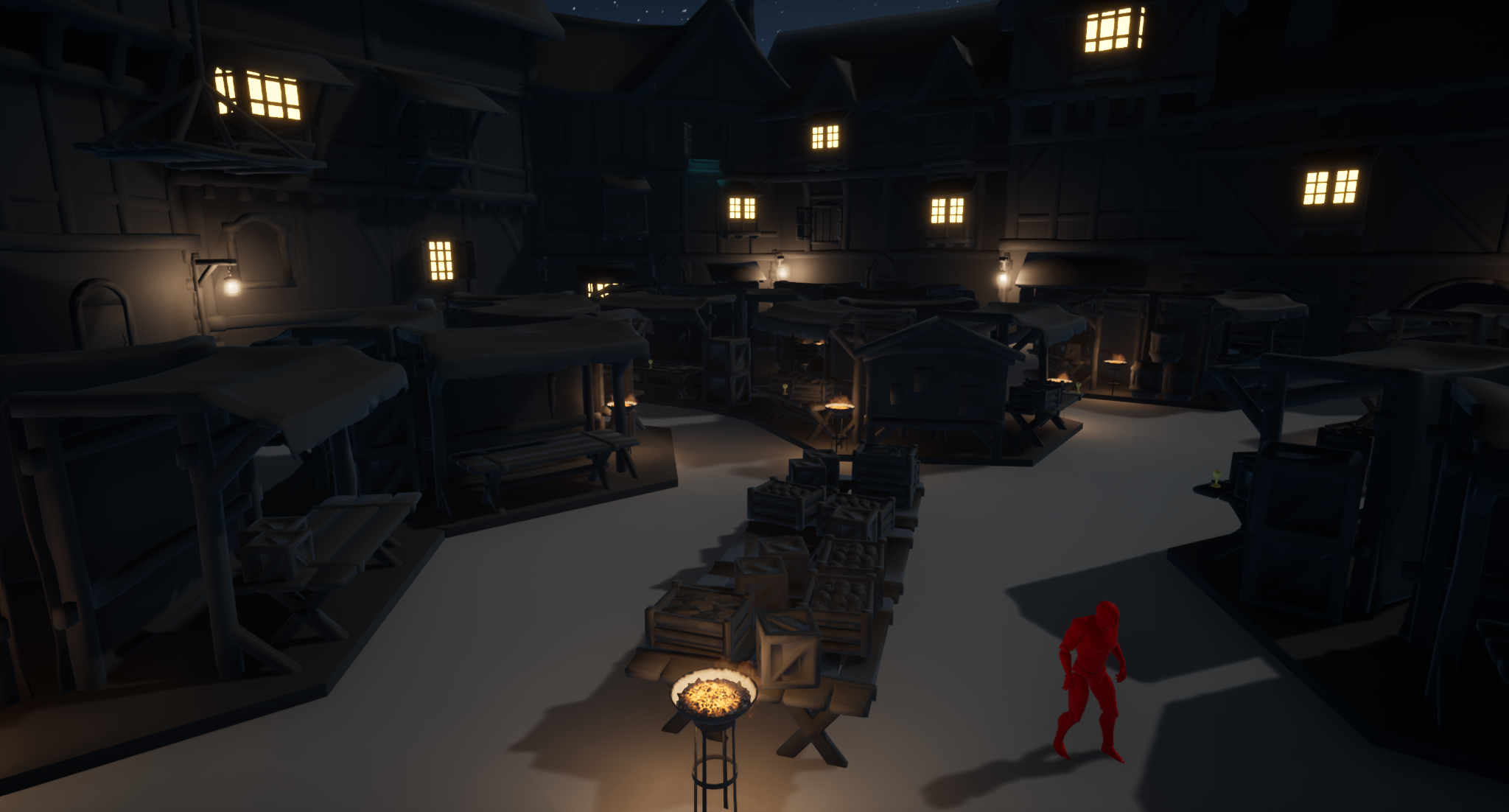
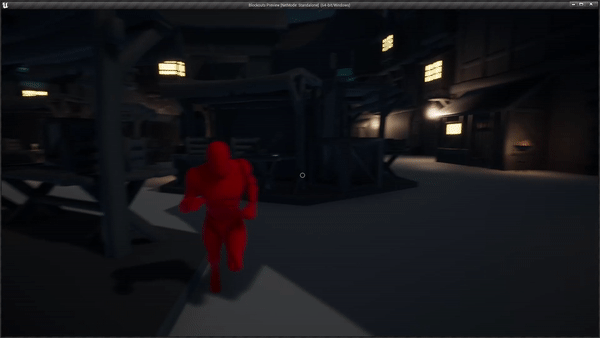
Guard Patrols
The main motivation for my level Is the danger of being caught by guards.
Guards walk a variety of paths so the player has to be careful not to run into any. Cover, Stealth, and a bit of Planning will be your guiding principles when traversing the level.
Sound as a weapon
In my Thief project, sound is an essential gameplay mechanic that allows the player to navigate and solve problems within the level. The player is encouraged to use sound to their advantage, such as by luring guards away from their paths to create openings and avoid detection.
The use of sound to navigate and solve problems is a key aspect of the Thief experience, and my level design incorporates this mechanic to create a challenging and engaging gameplay experience. The guards are programmed to walk specific paths, and the player must use sound to manipulate their movements and find creative solutions to obstacles
Loot!
In my Thief project, loot is an important gameplay element that adds an extra layer of challenge and strategy to the level. Loot can be found scattered throughout the level, and the player must use stealth, speed, and sound to obtain it without being detected by guards.
I included loot in my level design because it is a signature aspect of the Thief series, and it adds an additional objective for the player to pursue. The use of stealth, speed, and sound to acquire loot is an integral part of the Thief experience, and my level design incorporates these mechanics to create a fun and engaging gameplay experience.
Movement
In my Thief project, the player has access to a range of movement mechanics that allow for versatile and engaging gameplay. These mechanics include crouching, jumping, and using vents and grappling tools to navigate the level.
I also added interactable windows that are marked with blue simmering lights. These windows can be used as entry points to access new paths and areas within the level. The use of vents and grappling tools allow the player to move quickly and efficiently through the level, adding an extra layer of strategy and challenge to the gameplay. Overall, the movement mechanics in my Thief project are designed to enhance the player's experience and add to the feeling of being a sneaky and agile thief.
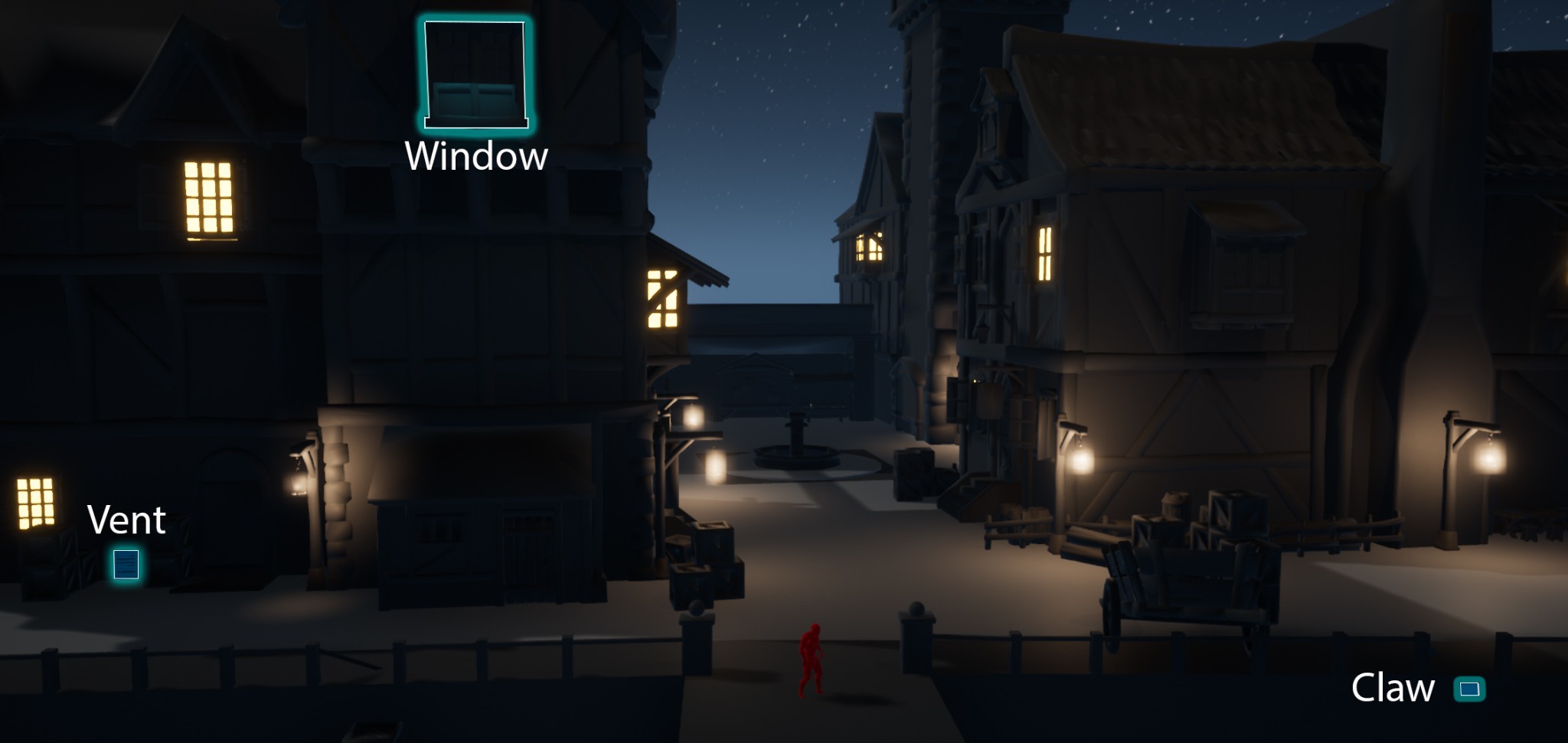
Step 6: Retrospective
Through my Thief project, I had the opportunity to apply and develop a range of skills and knowledge related to level design and game development. Some key takeaways from this project include:
- A deeper understanding of level design principles and techniques, such as creating a 2D layout, building and polishing a level, and incorporating feedback and iteration.
- An appreciation for the use of spatial and mechanical encounter principles to create engaging and challenging gameplay experiences.
- The importance of defining a clear objective and incorporating it into the level design.
- The value of incorporating sound, stealth, and other mechanics to enhance the gameplay experience.
- The benefits of collaboration and communication with other team members to bring a level to life.
- The importance of playtesting and user feedback in improving a level and ensuring it meets design and gameplay goals.
Overall, my Thief project provided a valuable learning experience and allowed me to apply and develop a range of skills and knowledge related to level design and game development. I am proud of the level I created and look forward to continuing to grow and improve as a level designer.
